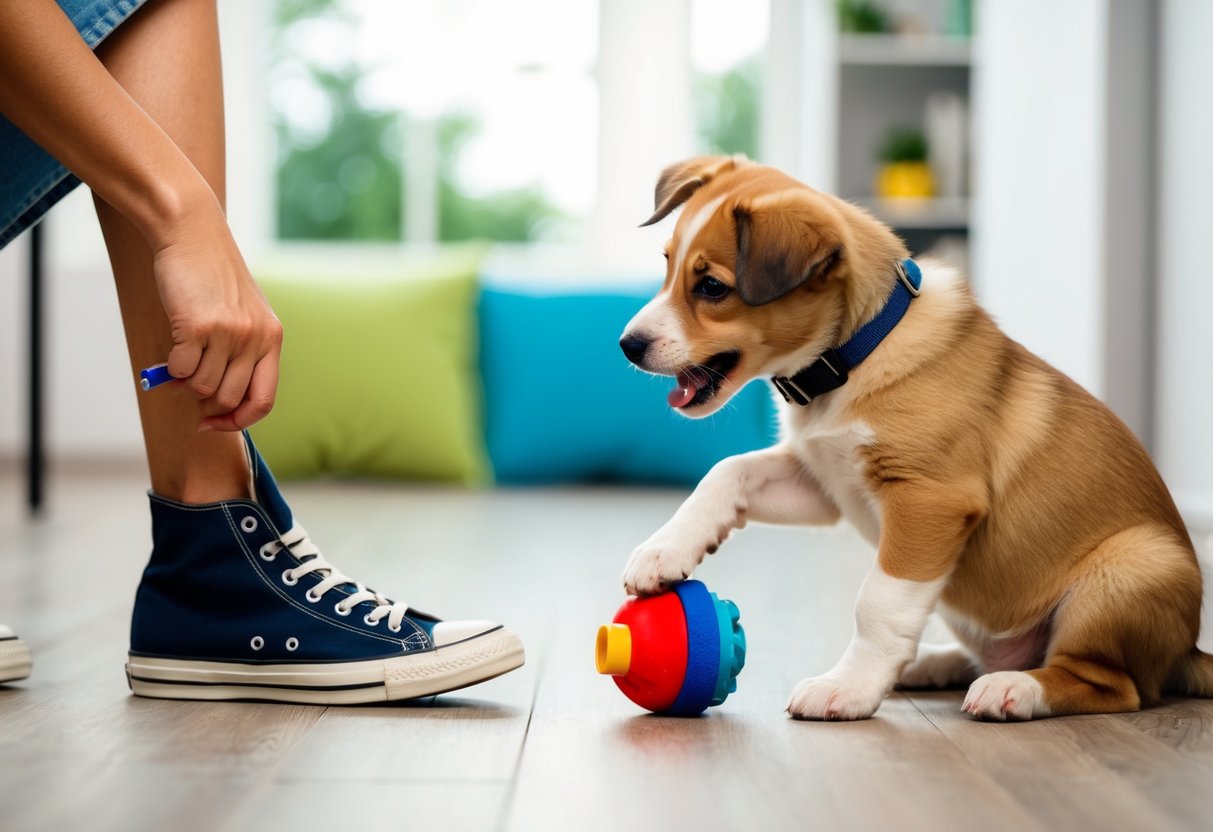
Maintaining Consistency in Training
Staying consistent in training is essential for pets to learn and retain new behaviors. Using the same commands and keeping a routine helps pets understand expectations.
Consistency in Commands and Routines
In any effective training program, using the same commands reinforces the behavior being taught. It is important that everyone involved with the pet uses identical commands for the same actions. If “sit” is used for getting the dog to sit, everyone should use “sit” and not variations like “sit down” or “take a seat.” This approach minimizes confusion, making it clear what is expected.
Maintaining a regular routine with set times for training or feeding also aids in establishing good behavior. Pets thrive on routine, as it provides them with a sense of security. When training sessions occur at the same times each day, pets become more receptive and responsive. This structure helps in faster learning, as they begin to anticipate the training, leading to improved behavior over time.
Monitoring Progress and Adjusting Strategies
Effective monitoring of pet behavior involves consistent observation and objective evaluation. By staying attentive to changes, pet owners can refine their training methods to improve unwanted behaviors, enhancing the development of positive habits.
Tracking Behavioral Changes
Pet owners should commit to systematic observation to track behavioral changes. This involves noting when and how often undesired behaviors occur and under what circumstances. Employing a training journal can be helpful for documenting specific incidents and timelines.
Setting short-term and long-term goals aids in evaluating progress. Regularly comparing current behaviors with initial records helps determine if strategies need modification. If expected changes are not observed, it might indicate the need to assess and adjust the techniques employed.
Reinforcement methods, such as positive affirmation for desired habits, should be continually analyzed for effectiveness. Adjusting rewards or modifying them based on individual pet reactions is crucial in maintaining a successful training regimen.
Long-Term Management of Behavior
Building positive habits in pets requires consistent effort and patience from dog owners. Addressing unwanted dog behavior can significantly improve the bond between the pet and owner. To effectively manage behavior problems, owners should consider establishing a regular training routine that aligns with the pet’s natural schedule.
Positive reinforcement plays a crucial role. Rewarding pets with treats, praise, or play when they exhibit desired behaviors encourages them to repeat these actions. Consistency in rewards helps to solidify these new behaviors over time.
Understanding the underlying causes of unwanted behavior is also essential. Anxiety, lack of exercise, or insufficient mental stimulation may lead to negative actions. Providing a stimulating environment through toys and regular exercise aids in reducing such issues.
Regular check-ins with a professional trainer or veterinarian can offer guidance and adjust strategies as needed. These professionals provide insights that help tailor approaches to an individual pet’s needs.
Monitoring progress is key to long-term success. Maintaining a journal or log of behaviors can help identify patterns and measure improvements. This ongoing evaluation ensures that any modifications to tactics can be made promptly.
Training shouldn’t stop once a behavior seems corrected; ongoing reinforcement and occasional training sessions reinforce positive habits. This approach helps to prevent the recurrence of behavior problems, ensuring a harmonious relationship between the pet and its owner.



